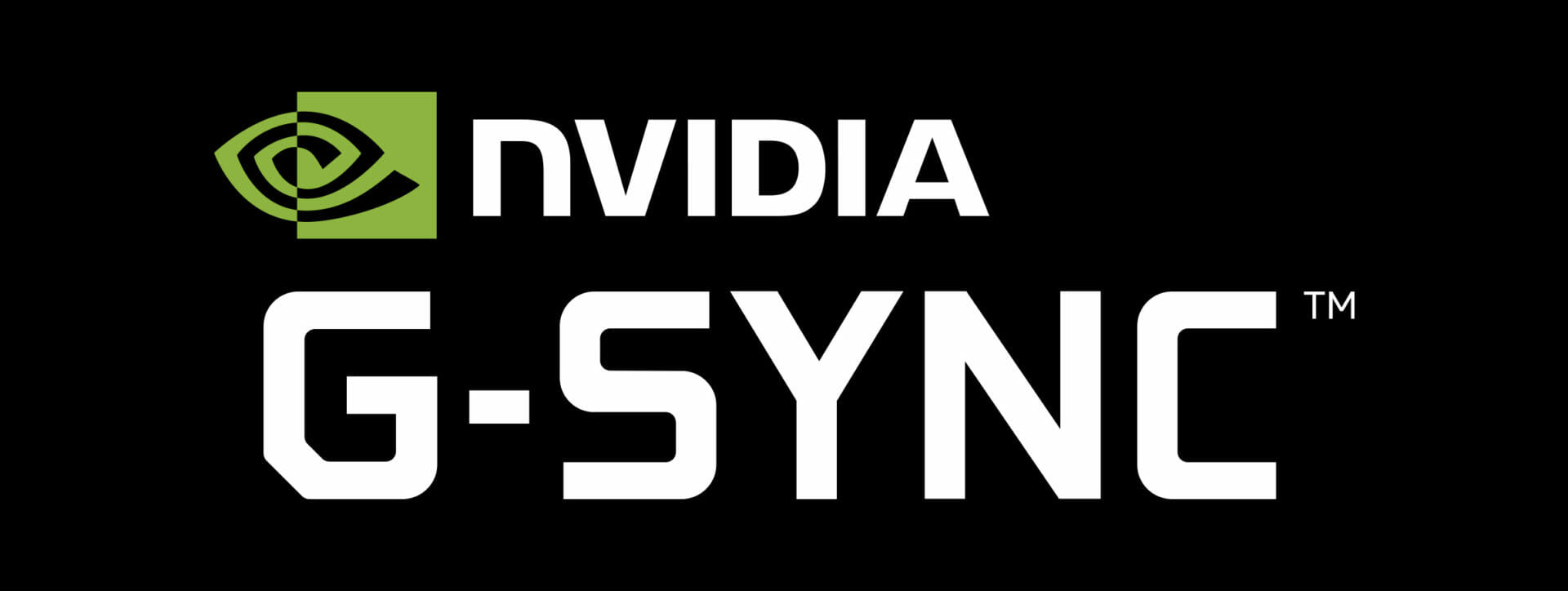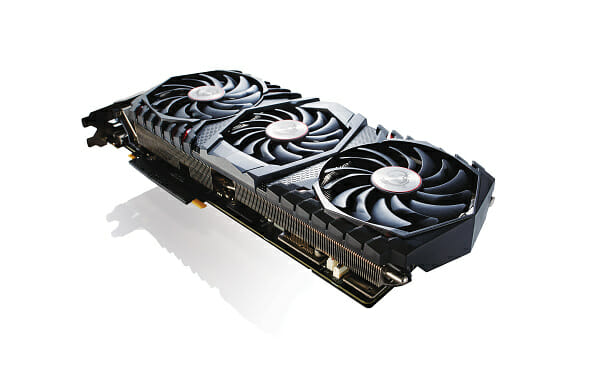Table of Contents
Adaptive Sync is one feature that any gaming enthusiast should consider while looking for a gaming monitor. When looking for a gaming monitor, people look for various features, including fast refresh rate, high frame rates, and low input lag.
Key Takeaways
- Adaptive Sync ensures smooth gaming by improving the performance of your monitor
- G-sync and FreeSync are both forms of Adaptive Sync, though Nvidia cards only support G-Sync, while AMD cards only support FreeSync
- You need a monitor that supports the same technology as the card to use either form of Adaptive Sync.
- Adaptive Sync does a better job at eliminating both screen tearing and stuttering than V-Sync
One of the most annoying issues you can experience with a gaming monitor is screen tearing. The issue happens if your screen's refresh rate doesn't Sync with the frame rate. Without synchronization, you will not enjoy a smooth gaming experience. Various monitor brands have developed various technologies to help sync the frame rate of your graphics card and the monitor's refresh rate. One of the technologies is known as Adaptive Sync. So, if you are looking forward to knowing what Adaptive Sync is at an in-depth level, keep reading our brief.

What Is Adaptive-Sync and How Does it Affect Your Gaming?
Adaptive Sync by VESA (Video Electronics Standards Association) is a technology that syncs the monitor's refresh rate with the outputting frame rates of the GPU to ensure smooth gaming. The adaptive sync technology ensures that every frame is displayed as soon as possible, preventing screen tearing and game stuttering.
Besides gaming, adaptive Sync also enables seamless movies playback at different frame rates. It changes your screen's refresh rate to match the video content, reducing power consumption and getting rid of video stutters.
Do You Require Adaptive Sync On?
Adaptive Sync is a feature that ensures smooth gaming by syncing the refresh rate and frame rate. Gaming enthusiasts won't have smooth gaming without the VESA adaptive sync technology, as the process will be marred by screen tearing. Therefore, it is vital that your adaptive Sync is on to prevent the issues.Is Adaptive Sync Similar to G-Sync?
If you buy a gaming monitor today, you'll come across the AMD FreeSync technology or the NVIDIA G-Sync technology. The two are popular adaptive sync technologies.
Timing is the most significant issue that affects your screen. Your monitor's GPU can render frames at a rate faster than the screen can update. Thus, the screen compiles strips of varying frames. The ripping effect is evident when the view moves horizontally. At the same time, if the monitor's GPU can't output at the screen's refresh rate, you'll experience a stuttering effect.

AMD FreeSync monitors undergo a thorough certification process to ensure they offer low latency and tear-free experience. When you enable FreeSync, the monitor will refresh the screen in sync with the current game's frame rate. If the refresh rate is 60 Hz, the monitor will refresh at 60 frames per second. If the GPU's output increases, the refresh rate will also increase.
If you are playing a simple PC game, you may not require FreeSync technology (see post). The adaptive sync technology is unnecessary if the monitor GPU's frame rate is high. On the other hand, if you are playing a graphically intensive game, like CS:GO or League of Legends, your desktop may only render 40 to 50 frames per second, which is below the required refresh rates.
A FreeSync monitor will scale the refresh rate to match the frame rate. Your monitor will not refresh in the middle of a frame, meaning you'll never experience screen tearing. For FreeSync to work on your monitor, you require a compatible AMD graphics card. You also need to ensure that your TV or monitor supports VESA adaptive Sync (see VIZIO TV's gaming settings).
NVIDIA's G-Sync technology employs the same principle as VESA adaptive Sync. Gaming monitors using AMD's FreeSync technology may be cheaper than their G-Sync counterparts. That's because a G-Sync monitor requires you to use proprietary hardware by NVIDIA, while a FreeSync display doesn't require additional hardware. The strict regulations enforced by NVIDIA make G-Sync monitors have strict quality control. Thus, G-Sync compatible monitors come at a premium price.
If you purchase a monitor equipped with G-Sync technology, you'll require a compatible NVIDIA graphics card.

Therefore, VESA's adaptive Sync is the same as NVIDIA G-Sync as they both help sync the refresh rates with the GPU's outputting frames rate. The G-Sync adaptive sync prevents screen tearing when you play fast-paced games with higher frame rates.
V-Sync Vs. Adaptive-Sync technology Differences
V-Sync, also known as vertical Sync, is the original GPU technology that syncs the frame rate of your game with the monitor's refresh rate. Its primary purpose was to deal with screen tearing, and it is found in most modern graphics cards.
If you enable V-Sync on your monitor, it caps the frame rate of the graphics card output to the display's refresh rates. The monitor avoids handling higher frame rates than it can manage, eliminating screen tearing.
It offers dynamic adjusting that deals with screen tearing and juddering effect that arises when V-Sync causes the FPS to fall.
Adaptive Sync ensures that each frame is displayed as soon as possible, which minimizes the possibilities of input lag. It will also prevent game stuttering by ensuring no frame is repeated within the display's refresh rate. You don't have to implement adaptive Sync in every scenario because its main purpose is to stabilize the image. For instance, if you are playing a demanding game like Fortnite, with frame rates that change every second.

If you enable V-Sync on your monitor, it caps the frame rate of the graphics card output to the display's refresh rates. The monitor avoids handling higher frame rates than it can manage, eliminating screen tearing.
Note, if the frame rate of your game is below the screen's refresh rate, enabling vertical Sync will drop the FPS further to match the monitor. The drop causes added latency that will enhance input delays and impede performance.
Unlike V-Sync that limits the GPU's frame rate to match the screen's refresh rate, adaptive Sync adjusts the refresh rate to respond to the frame rates required to render the game.
If the game's frame rate changes per second, you require adaptive Sync (G-Sync and Freesync) to keep the vertical refresh rate matching with the graphic's output. If you are playing a simple game, for instance, at 144HZ and maintain the frame rate, you won't require adaptive Sync, but it'll be available as a backup. If the monitor has challenges maintaining the frames, adaptive Sync will help maintain a smooth gaming experience.
Advantages of Adaptive-Sync
It limits the V-Sync limits of capping higher FPS
Improves the performance of your monitor
Provides a variable refresh rate that matches your GPU's outputting frame rates, eliminating screen tearing and game stuttering
It improves your video playback and gaming experiences as the screen transmits a smooth frame-by-frame transition.
Improves your monitor's image quality
Most monitors come with adaptive Sync to enhance display performance
Disadvantages
You require a compatible graphics card and monitor to use adaptive Sync
Peak refresh rates and frames per second depending on how powerful your monitor's GPU is
Expensive. FreeSync is cheaper than G-Sync that requires NVIDIA proprietary hardware. However, they are both costly as you need a corresponding graphics card and monitors to enjoy peak performance
Your monitor must satisfy the standard necessary to use adaptive Sync. Premium versions of Freesync and G-Sync should come with 120 Hz and 144 Hz refresh rates
How to Use Adaptive Sync
You can enable Adaptive Sync on your device by heading over to the GPU’s control center and changing the display settings. All Windows PCs with compatible hardware and newer Macs support Adaptive-Sync.
Should You Turn the Adaptive-Sync On or Off?
If you are a gaming enthusiast and use competitive GPU frames per second, enabling adaptive Sync on your monitor enhances its performance. It also maximizes your gaming experience. It helps to minimize latency and input lag and eliminates distracting stuttering and annoying screen tearing.
G-Sync and FreeSync monitors are enabled automatically. Go to your GPU app to find out the type of adaptive Sync enabled on your device.

How Do You Turn On/Off Adaptive Sync on Your Computer?
Open your windows and go to the NVIDIA/AMD control panel
On the control panel, click on "Display" to open the drop-down option
Next, go to "Setup FreeSync" or "G-Sync"
Select the model of your computer
Check "Enable settings for the selected model"
Finally, click on "apply" settings
How Do You Turn On/Off Variable Refresh Rate on Your Monitor?
Variable refresh rate (VRR) changes the refresh rate on your display to avoid screen tearing. It changes the refresh rate from low to high as your video playback or gameplay is in progress. Turning the VRR on or off doesn't affect your G-Sync or adaptive sync setups in the control panel.
The VRR feature is disabled by default, but you can activate it to get rid of display issues as you enjoy your game. But how do you turn the VRR feature on?
- First, open your Windows search bar and enter Settings. Next, click on the settings app that opens.
- When the settings app is open, go to "Display" to open the selection
- Next, go to the MULTIPLE DISPLAYS bar and click on the "GRAPHICS SETTINGS"
- If your monitor is adaptive Sync enabled, it'll show you a "VARIABLE REFRESH RATE" button. Select ON/OFF
- Close the window. You can consider restarting your game to apply the changes
Final Word on Adaptive Sync
When looking for a gaming monitor, gamers consider various features, including low input lag, high resolution, low input lag, and size. Adaptive Sync is another vital feature that you should look out for. Adaptive Sync by VESA syncs your display's refresh rate with the Graphics Processing Unit's output frame rate, thereby preventing screen tearing and game stuttering.
FAQs
1. Is Adaptive Sync supported on laptops?
Yes, Adaptive Sync is supported on laptops that have a compatible display. Almost all displays will be configured to use AMD FreeSync or Nvidia G-Sync from the factory. However, not all laptops' displays with AMD or Nvidia graphics are equipped with an Adaptive Sync support. Even some gaming laptops don't have this feature, so you should always check the specifications.
2. How important is Adaptive Sync?
Adaptive Sync is very important for easing the eyestrain which is commonly caused by screen tearing. This is where Adaptive-Sync excels thanks to AMD's FreeSync and NVIDIA's G-Sync technology. Adaptive-Sync eliminates screen tearing, stuttering, and latency simultaneously and does so with minimal input lag.
3. How to spot screen tearing?
The most common situation where screen tearing occurs is when the image moves horizontally, such as in games where players scan their eyes around a room. This scrolling movement amplifies the visual impact of any screen tearing effects.
4. Is Adaptive Sync same as variable refresh rate?
Yes, it is. Variable refresh rate (VRR), also referred to as adaptive sync, allows the monitor to adjust it to the output signal. This allows for games to eliminate screen tearing with less of the usual downsides of Vsync (such as stuttering).
5. Does Adaptive Sync work with HDMI?
Yes, FreeSync technology has supported HDMI since its inception.


